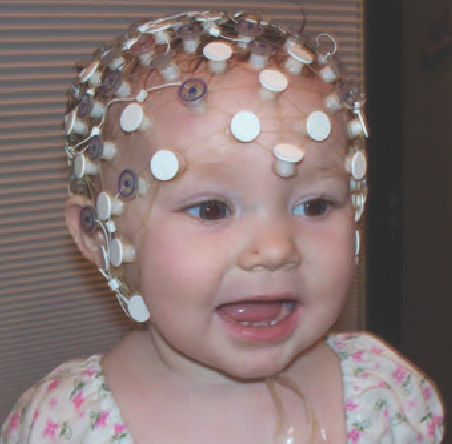
Nathan Fox and his colleagues have found that children’s brain activity, measured by EE G, varies as a function of whether they are experiencing positive or negative emotions. Children who are experiencing positive emotions, or who have an exuberant temperament, display more left-sided EE G activation, whereas children who are experiencing negative emotions, or who have a fearful temperament, display more right-sided activation. These different patterns, found in infants as young as 9 months, appear to reflect an underlying approach-avoidance motivation system in the brain.
COURTESY OF NATHAN A. FOX, DEPT. OF HUMAN DEVELOPMENT AND QUANTITATIVE METHODOLOGY, UNIVERSITY OF MARYLAND